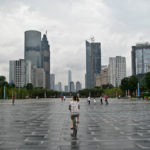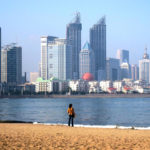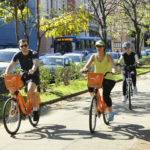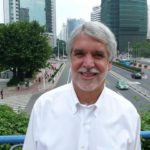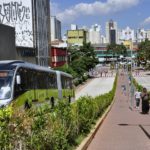Search Results
Black carbon – a short-lived climate pollutant emitted into the air by incomplete combustion of fuels – is a both major contributor to climate change and a concern for public health in cities. At the global scale, black carbon has ...

2015 is a year of utmost importance for the global sustainable development agenda, and cities will play a pivotal role. Landmark global decisions over the next 12 months provide opportunities to unlock the potential of cities and improve quality of ...

As we recently discussed on TheCityFix, momentum is building for open streets in cities worldwide. Across seven Indian cities, tens of thousands of citizens are taking back their streets during weekly car-free days. Similar open streets events now occur in ...

2015 is a year of utmost importance for the global sustainable development agenda, and cities will play a pivotal role. Landmark global decisions over the next 12 months provide opportunities to unlock the potential of cities and improve quality of ...

Is biking more on your list of resolutions for 2015? If so, you have probably considered what to do to be safer while biking in the city. Around the world, new policies and innovative technologies are being developed to support ...

As you know if you’ve followed the previous installments in TheCityFix’s Year in Review series, we’ve been witness to some pretty incredible moments for urban sustainability in 2014. Some, however, have captivated our global community of readers more than others. ...

The science of sustainable cities is constantly evolving. Cities are the birthplace for innovative ideas to address a myriad of global challenges, and new solutions require strong leadership. Throughout 2014, Dario Hidalgo and TheCityFix have examined the pioneers of sustainable ...

With urban growth come a number of opportunities to positively transform our cities. And while the unique challenges faced by city leaders are shaped by local contexts and histories, their actions reveal broader trends in how cities worldwide are changing ...

With every year that passes, the challenges to creating the sustainable cities we want to live in seem to multiply. Our cities are growing larger, their roads are more congested, their air quality is deteriorating, and their contributions to climate ...

Do the streets in your city belong to people or cars? In more and more cities worldwide, residents are taking back their streets as public spaces. The open streets movement started in the 1970s with “Sunday Ciclovía” in Bogotá, Colombia, ...

Transport and urban development are inherently linked. Though the majority of residents in many of the world’s biggest cities do not own a car, cities are often designed around the needs of automobiles instead of the needs of people. In ...

Eighty-five percent of Brazilians live, work, and play in cities. As such, urban mobility is a fundamental driver of quality of life for the vast majority of the country, enabling access to jobs, healthcare, schools, and other everyday needs. In ...

What will your ideal city look like in 2030? That is the question of the third annual international blogging contest hosted by Masdar, Abu Dhabi’s renewable energy company behind Masdar City. One winner will receive a paid trip to Abu ...

This is the seventh entry in the Urbanism Hall of Fame series, exclusive to TheCityFix. This series is intended to inform people about the leading paradigms surrounding sustainable transport and urban planning and the thinkers behind them. By presenting their many stories, TheCityFix ...

Every day, more than 31 million people use bus rapid transit (BRT) systems and bus corridors in 189 cities. From Istanbul to Mexico City, BRT is saving people time, improving the environment, and making cities safer, more sustainable places to ...

Page 81 of 228« First...1020...808182...90100...Last »
 Phil
Great article! A lot of what I have read here, has already been implemented in cities in the Netherlands, with Denmark the two bicycle countries par...
Phil
Great article! A lot of what I have read here, has already been implemented in cities in the Netherlands, with Denmark the two bicycle countries par...
 Bobby Salvin
I understand why some people wish mobility and GDP weren't connected, but it's wishful thinking. During the pandemic, for instance, when the economy...
Bobby Salvin
I understand why some people wish mobility and GDP weren't connected, but it's wishful thinking. During the pandemic, for instance, when the economy...
 Peace
Let me understand your Position -
We need to make our streets and public spaces dangerous and inhospitable so the disabled and infirm are forced to...
Peace
Let me understand your Position -
We need to make our streets and public spaces dangerous and inhospitable so the disabled and infirm are forced to...





